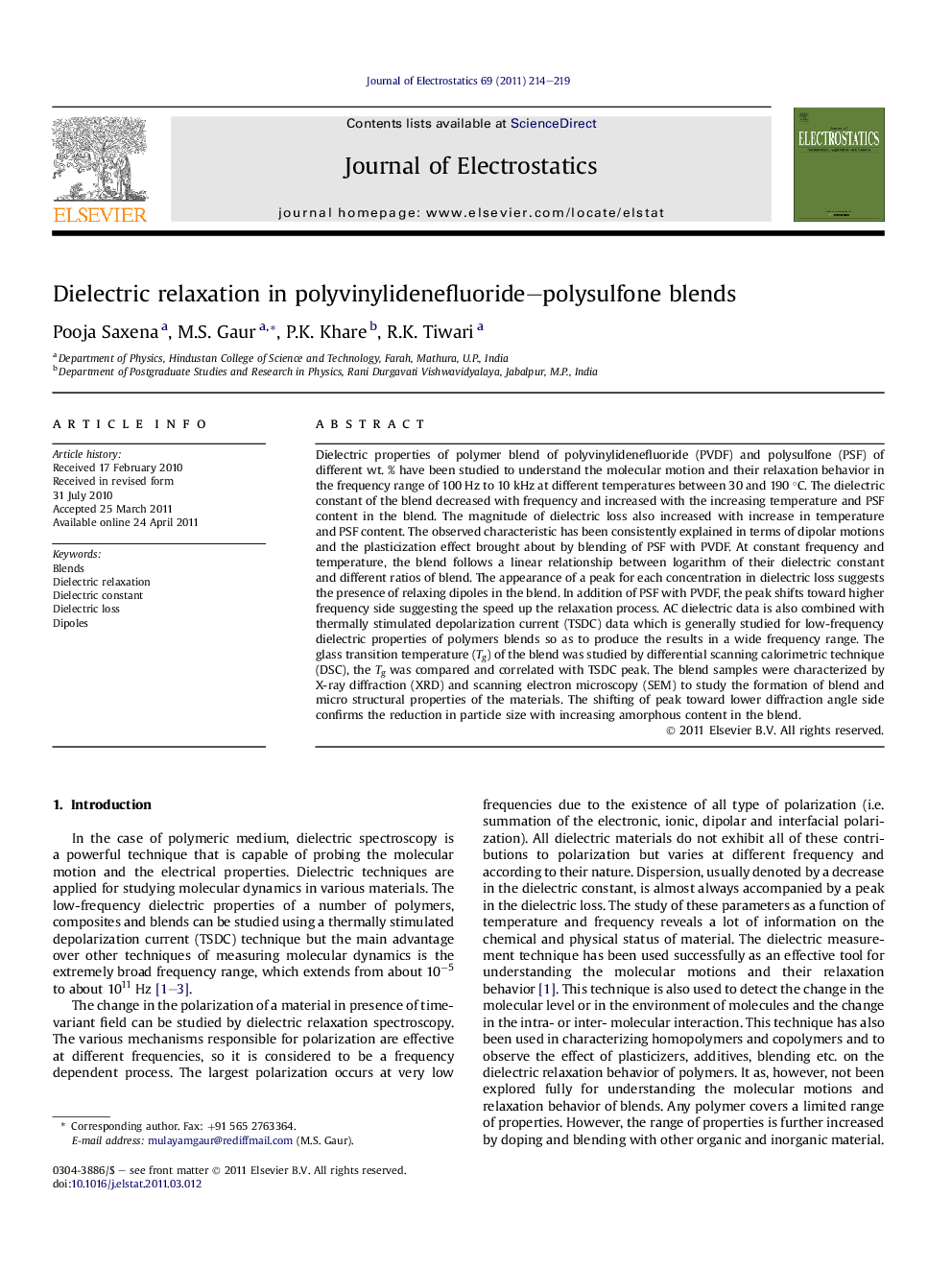| Article ID | Journal | Published Year | Pages | File Type |
|---|---|---|---|---|
| 727120 | Journal of Electrostatics | 2011 | 6 Pages |
Dielectric properties of polymer blend of polyvinylidenefluoride (PVDF) and polysulfone (PSF) of different wt. % have been studied to understand the molecular motion and their relaxation behavior in the frequency range of 100 Hz to 10 kHz at different temperatures between 30 and 190 °C. The dielectric constant of the blend decreased with frequency and increased with the increasing temperature and PSF content in the blend. The magnitude of dielectric loss also increased with increase in temperature and PSF content. The observed characteristic has been consistently explained in terms of dipolar motions and the plasticization effect brought about by blending of PSF with PVDF. At constant frequency and temperature, the blend follows a linear relationship between logarithm of their dielectric constant and different ratios of blend. The appearance of a peak for each concentration in dielectric loss suggests the presence of relaxing dipoles in the blend. In addition of PSF with PVDF, the peak shifts toward higher frequency side suggesting the speed up the relaxation process. AC dielectric data is also combined with thermally stimulated depolarization current (TSDC) data which is generally studied for low-frequency dielectric properties of polymers blends so as to produce the results in a wide frequency range. The glass transition temperature (Tg) of the blend was studied by differential scanning calorimetric technique (DSC), the Tg was compared and correlated with TSDC peak. The blend samples were characterized by X-ray diffraction (XRD) and scanning electron microscopy (SEM) to study the formation of blend and micro structural properties of the materials. The shifting of peak toward lower diffraction angle side confirms the reduction in particle size with increasing amorphous content in the blend.
► Ac dielectric and TSDC have been investigated for PVDF and PSF blends. ► The dielectric constant of the blend increased with the PSF content in the blend. ► The observed characteristic has been explained in terms of dipolar motions and the plasticization effect. ► The Tg of the blend was studied by DSC and it was confirmed and correlated with the TSDC peak. ► TSDC study which is an isothermal low frequency technique is combined with Ac dielectric studies so as to produce more versatile and concrete interpretations.
